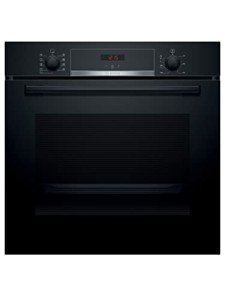What's The Job Market For Kitchen Built In Oven Professionals?
페이지 정보

본문
The Ultimate Guide to Kitchen Built-In Ovens: What You Need to Know
When it pertains to modern-day kitchen areas, the built-in oven is more than just an appliance; it is a statement of style, effectiveness, and performance. Built-in ovens are designed to incorporate flawlessly into kitchen cabinetry, supplying a streamlined look that improves the total style of the kitchen. This article checks out the various types, benefits, and factors to consider of kitchen built-in ovens, and offers insights to help you make an informed buying decision.

Table of Contents
- What is a Built-In Oven?
- Types of Built-In Ovens
- 2.1 Single Ovens
- 2.2 Double Ovens
- 2.3 Steam Ovens
- 2.4 Wall Ovens
- Benefits of Built-In Ovens
- Key Features to Look For
- Installation Considerations
- Regularly Asked Questions
- Conclusion
1. What is a Built-In Oven?
A built-in oven is an oven developed to be installed within kitchen cabinetry rather than as a freestanding unit. This style permits greater visual versatility while maximizing readily available kitchen space. Built-in ovens can be found in various sizes and configurations, accommodating diverse culinary requirements and kitchen styles.
2. Types of Built-In Ovens
Comprehending the various types of built-in ovens can help consumers choose the best one for their kitchen setups and cooking styles.
2.1 Single Ovens
Single ovens are compact and created to fit within basic cabinet widths. These ovens normally supply sufficient space for daily cooking needs, such as baking or roasting. They are available in different integrated electric oven or gas designs and are frequently user-friendly with simple controls.
2.2 Double Ovens
For individuals who often host large events or delight in cooking multi-course meals, double ovens can be a lifesaver. These units consist of two different oven compartments and deal increased cooking capability, enabling simultaneous baking or roasting at various temperature levels.
2.3 Steam Ovens
Steam ovens utilize steam to prepare food, which assists retain moisture and nutrients. These ovens are significantly popular among health-conscious individuals and premium cooks. Steam ovens can be built-in together with conventional ovens for a versatile kitchen setup.
2.4 Wall Ovens
Wall ovens are created to be set up within a wall instead of under counter tops. They use convenient gain access to and can be integrated ovens with other wall-mounted kitchen appliances. Wall ovens may be readily available as single or double units.
3. Advantages of Built-In Ovens
Selecting a built-in fitted oven features numerous benefits:
- Space Efficiency: Built-in ovens can be tucked into kitchen cabinetry, freeing up valuable kitchen built in oven space.
- Aesthetic Appeal: They provide a cleaner, more contemporary look than standard freestanding ovens.
- Variety of Designs: Built-in ovens are offered in numerous surfaces, including stainless-steel, black, and white, permitting integration with numerous kitchen styles.
- Boosted Functionality: Many built-in ovens come geared up with innovative functions such as self-cleaning modes, touch screens, and convection innovation.
4. Secret Features to Look For
When choosing a built-in oven, consider the following features to improve cooking performance:
- Temperature Range: A more comprehensive temperature range permits greater flexibility in cooking numerous meals.
- Self-Cleaning Options: Look for designs that offer self-cleaning abilities to save time and effort on maintenance.
- Convection Cooking: Convection ovens distribute air to prepare food uniformly and rapidly.
- Wi-Fi Connectivity: Some modern-day built-in ovens come with Wi-Fi ability, enabling users to manage settings or pre-heat the oven from another location.
- Safety Features: Check for functions like automated shut-off, child locks, and cooling systems to make sure maximum security.
5. Setup Considerations
Before buying a built-in oven, particular installation aspects need to be resolved:
- Size and Dimensions: Ensure the chosen oven fits the designated area. Procedure the height, width, and depth of the intended setup area.
- Ventilation: Gas ovens require adequate ventilation to ensure security. Consult an expert if essential.
- Electrical Requirements: Check the electrical requirements of the chosen system to make sure compatibility with existing outlets.
- Expert Installation: If you're not experienced in appliance setup, it might be smart to look for professional help to ensure proper fitting and compliance with regional codes.
6. Regularly Asked Questions
Q1: How do built-in ovens vary from freestanding ovens?A: Built-in ovens are set up in cabinets for a seamless look, while freestanding ovens stand alone and do not need built-in setup.
Q2: Can you set up a built-in oven yourself?A: While some individuals with experience may choose to set up an oven themselves, it is normally advised to hire a professional to ensure electric or gas connections are safely installed. Q3: Are built-in ovens energy-efficient? A: Many built-in ovens feature energy-saving technology and are frequently more efficient compared to older models. Constantly check energy ratings before purchasing. Q4: Do built-in ovens need unique maintenance?A: Regular maintenance consists of keeping

the interior tidy and inspecting for any wear and tear. Self-cleaning
models can simplify this task substantially. Q5: What is the average life expectancy of a built-in oven?A: The typical lifespan of a built-in oven is usually between 10 to 15 years, depending upon usage and Kitchen built in oven maintenance practices. 7. Conclusion Buying a built-in oven can boost both the performance and aesthetics of your kitchen. With numerous types and functions readily available, consumers
can pick models that
best fit their cooking style and style choices. Whether a skilled chef or a home cook, the benefits of going with a built-in oven are clear. By considering the details laid out in this guide, people can make educated choices that will cause years of cooking satisfaction. Additional Resources For further information on kitchen appliances, think about having a look at the list below resources: Consumer Reports: Product reviews and buying guides. Energy Star: Energy-efficient home appliance recommendations. Home Improvement Stores: Local professionals can provide additional insights and recommendations. Embarking on a kitchen renovation or upgrade can be
an exciting journey, and selecting the best built-in oven plays a vital functionin producing afunctional and trendy cooking environment.- 이전글호실 | 구글상단노출O1O♪6716♪0529카톡subic1블랙키워드도배 25.05.19
- 다음글무직자작대 카톡[DIALOAN] 무직자작대업체 연체자작대업체 사업자작대업체 25.05.19

